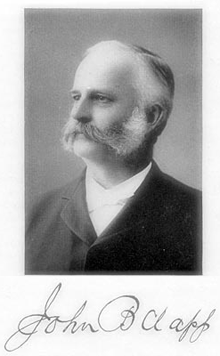|
My wife found two letters hidden in a cover of a book from her grandfather from General Clapp, Union Army. My research indicates that John Clapp was captured at the Battle of Plymouth. The letter is written in 1862 while en route to a Confederate prison in Macon, Ga. He was going on a hospital ship, but was not wounded too seriously. He had to be careful while writing since he was being watched, and paper was scarce.
My interest is to have the letter appraised. I would hope that a letter written by a captured adjutant on his way to prison may be worth more than if leaving prison. How many people were ever able to write a letter while in transit to a Civil War prison? An Internet search for John Clapp documents the letter and his imprisonment for one year in Macon.
 J.S.: Prisoner of war letters are quite collectible and valuable, especially the covers, the envelopes with both US and CS stamps and various postal marks. Your ancestor was an officer, and officers were imprisoned at “nicer” facilities than enlisted soldiers. J.S.: Prisoner of war letters are quite collectible and valuable, especially the covers, the envelopes with both US and CS stamps and various postal marks. Your ancestor was an officer, and officers were imprisoned at “nicer” facilities than enlisted soldiers.
Your two letters and covers, however, have no interesting content, unfortunately. John Clapp speaks of nothing that might scare or upset his wife as to his fears or any poor treatment while on his way to Americus, Ga., where he must have thought he was going to the hellhole of Andersonville. He was quite fortunate in going to the officers’ prison in Macon where he had access to more comforts, especially since he could get money sent from home to buy some of the luxuries not accessible to enlisted men. Even his letter from imprisonment just states he is in good spirits, “…waiting to be exchanged.” Many officers from both sides were regularly exchanged, especially if they were politically connected early in the war. This was not as common late in the war when Lt. Clapp was captured. He was not paroled until March 1865, just a month before the war’s end.
The first cover has stamps removed, unfortunately, making its value $25-$50 instead of up to a few hundred dollars. The letter is maybe $100. The second letter and cover both are torn in half, stained and have taped repairs, making this letter about $100, maybe. Condition is the utmost qualifier of value in the philatelic world, as in most antiques.
Your ancestor had quite an interesting history.
|